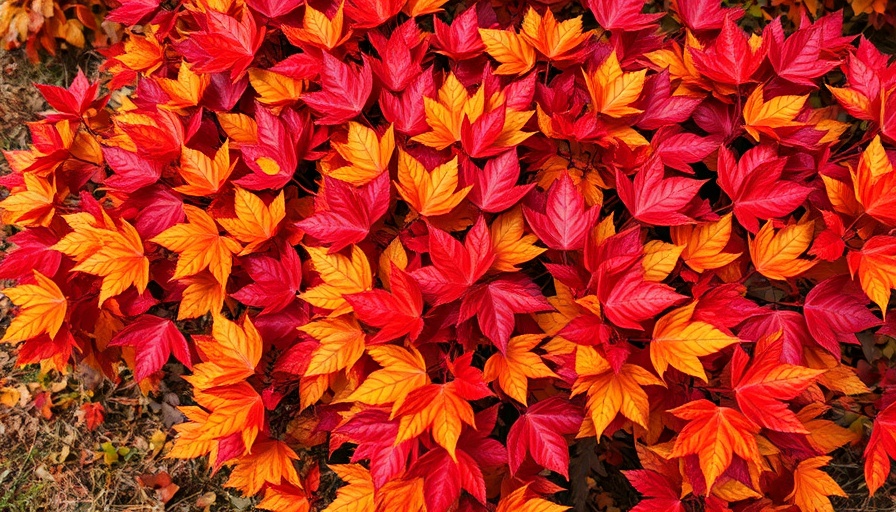
Seasonal Splendor: The Allure of Changing Colors
When we think of autumn, the first images that come to mind are often colorful leaves transforming landscapes into breathtaking vistas. Whether it's the rich reds, vibrant oranges, or the sunny yellows, the colors speak to our connection with nature. As the weather shifts, so do the palettes of our gardens, inviting us to embrace the seasonal changes. Not only do these plants provide visual beauty, but understanding which trees and shrubs display remarkable color changes can enhance your yard's aesthetics throughout fall.
A Focus on Exceptional Trees and Shrubs
Consider introducing some stunning varieties known for their fall color displays. The Sugar Maple 'Fall Fiesta®' (Acer saccharum) is a quintessential choice—its fiery leaves turn shades of orange, gold, and crimson, providing a spectacular show that lasts throughout fall. The compact form of this tree allows it to fit into various landscape designs while ensuring you enjoy all the seasonal drama in a manageable size.
For those who prefer native options, Sourwood (Oxydendrum arboreum) is an excellent choice. This tree prefers full sun and boasts textured foliage that turns beautiful combinations of orange and red, creating depth and interest in your garden. As a native species, it attracts local wildlife and enhances biodiversity, making it a dual-purpose addition to your space.
Shaping Autumn Scenery with Vibrant Colors
To maximize autumnal beauty, consider groupings of trees and shrubs that contrast in both color and texture. For example, pairing the Ginkgo 'Goldspire™' (Ginkgo biloba) with dark evergreens can create a stunning visual effect. The ginkgo's bright golden leaves provide a striking contrast against lush, dark foliage. As you arrange your landscape, remember that planting in odd numbers tends to appeal to the eye and creates a more natural look, enhancing your outdoor spaces.
Creating a Cohesive Garden Environment
When arranging your garden, don’t underestimate the power of ornamentation that changes color throughout the year. The Purple Copper Beech 'Purpurea' (Fagus sylvatica) adds a majestic backdrop with leaves that shift from deep purple to copper as fall deepens. Grouping several of these along a pathway not only frames it beautifully but can also serve as a dramatic visual anchor for the space.
Optimal Care for Stunning Displays
To ensure your plants shine their brightest in fall, understanding the growth conditions they thrive in is essential. These varieties typically require adequate sunlight, moisture, and soil nutrients. For example, many choose to start a backyard planting box or implement outdoor soil beds that use rich compost, giving them the best foundation for health and vibrant outputs.
Autumn foliage is often a product of careful management and nurturing throughout the growing season, so consider engaging in regular watering habits, especially during dry spells before autumn sets in. Grouping plants with similar care needs can minimize upkeep and enhance your enjoyment of the changing colors.
Enhance Your Garden with Seasonal Transformations
Whether you are a homeowner looking to beautify your property with simple yet effective landscaping, or an avid gardener seeking to enhance biodiversity, selecting plants that deepen their color as the season progresses offers both aesthetic pleasure and ecological benefits. Investing the time now to design a landscape with versatile plants, and perhaps even build elevated planter boxes, can yield terrific results come fall.
By being mindful of species selection and care, you can create a colorful tapestry in your garden that celebrates the beauty of nature's seasonal shifts. There’s so much fulfillment in seeing your landscape flourish with vibrant colors, beckoning friends and family to enjoy the crisp autumn air amid your botanical artistry.
Ready to transform your outdoor space? Embrace the calling of fall and its refreshing colors in your next gardening project!
 Add Row
Add Row 
 Add
Add 


Write A Comment